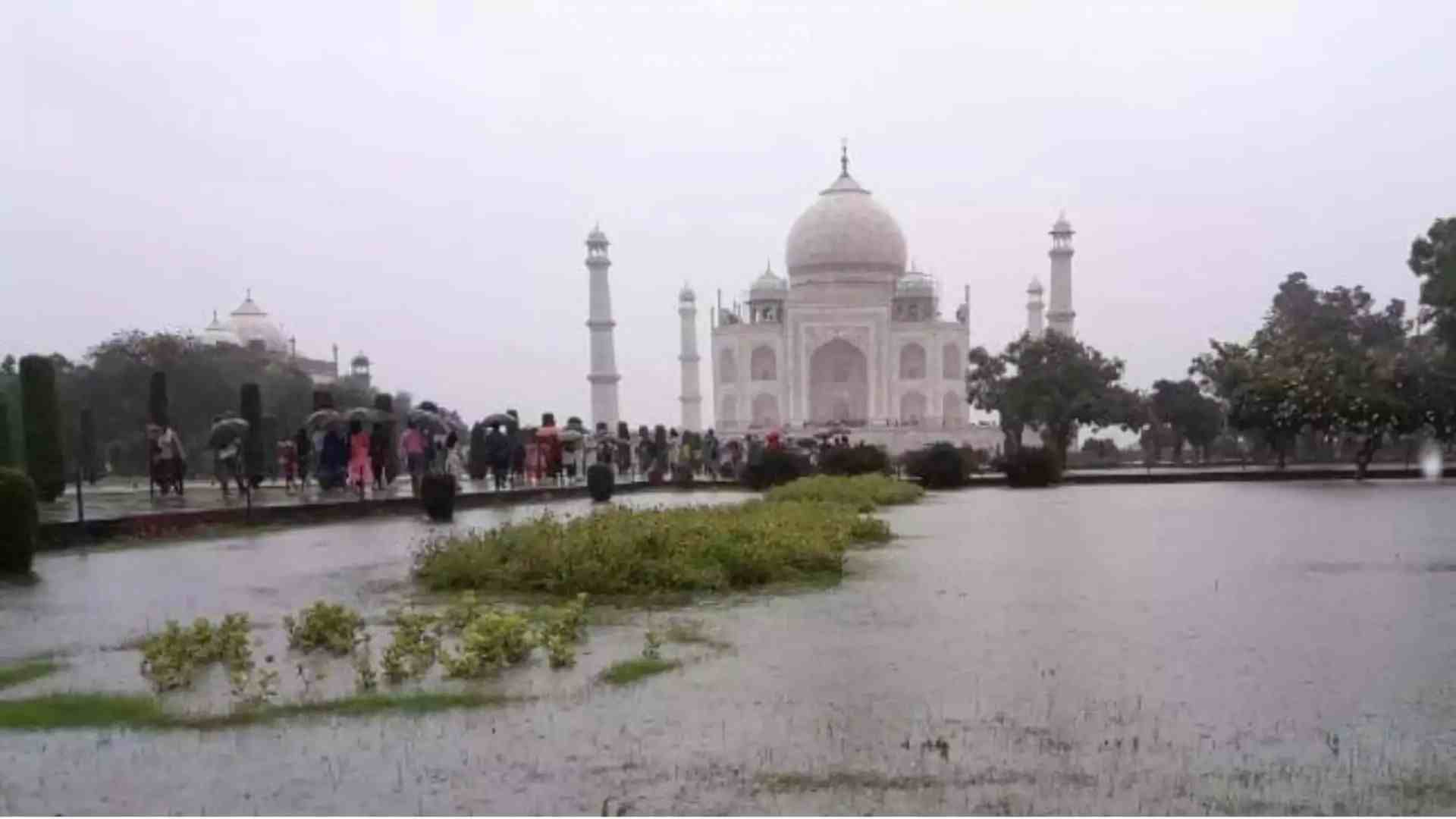The Taj Mahal’s iconic main dome in Agra has experienced water leakage due to three consecutive days of heavy rain, as reported by news agency PTI. The continuous downpour caused flooding in one of the monument’s gardens, drawing attention from visitors and sparking concern when a viral video of the waterlogged area circulated on Thursday.
A senior official from the Archaeological Survey of India (ASI), Agra Circle, confirmed the issue, citing that the leakage in the main dome was caused by seepage, but assured that there was no significant damage. “Yes, we observed leakage in the main dome of the Taj Mahal. Upon inspection, it was found to be caused by seepage, and no damage has occurred. We verified the condition of the dome using a drone camera,” ASI Agra Chief Rajkumar Patel told PTI.
The viral video, which is about 20 seconds long, shows one of the gardens completely submerged in rainwater. This unusual sight caught the attention of tourists, many of whom filmed the incident.
Watch:
Local government-approved tour guides highlighted the significance of the Taj Mahal, not only as a symbol of national pride but also as a key source of employment for hundreds in Agra’s tourism sector. Monika Sharma, one such guide, remarked, “Proper care must be taken of the monument, as it is the only hope for those in the tourism sector.”
For the past few days, heavy rainfall has wreaked havoc across Agra, leading to waterlogging in various parts of the city. National highways were flooded, crops were submerged, and even upscale areas faced severe water-clogging issues.
About the Taj Mahal
Built between 1632 and 1653 by Mughal Emperor Shah Jahan, the Taj Mahal stands as a mausoleum for his beloved wife, Mumtaz Mahal, who passed away during childbirth. Recognized as a UNESCO World Heritage Site, this architectural marvel blends Persian, Islamic, and Indian styles. The complex includes a grand dome, elegant minarets, lush gardens, and a reflecting pool, representing eternal love and attracting millions of visitors every year.







